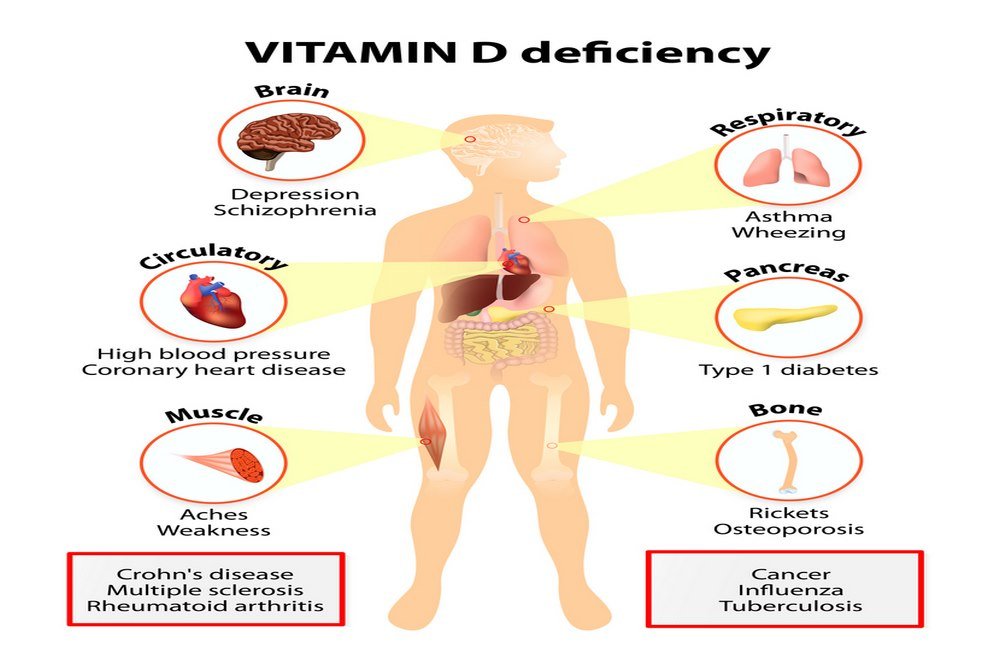Vitamin D Deficiency

People might develop vitamin D deficiency when their usual intakes are decreasing over time than the levels your body require for functioning normally. There might be multiple underlying causes of vitamin D deficiency including limitations to sunlight exposure, inability of kidneys to convert 25(OH) D to its active form, or inadequate absorption of vitamin D in the digestive tract. Diets that contain low levels of vitamin D are one of the main reason behind vitamin D deficiency especially in the case of people who are either lactose intolerant or have milk allergy. Vegetarians or the people who consume vegan diet are also at risk of developing vitamin D deficiency.
In case of children, vitamin D deficiency results as rickets that characterizes by a failure of bone tissues to properly mineralize the bones leading to skeletal deformities and soft bones. In addition to bone deformities, pain and severe rickets might lead to failure to survive, hypocalcemic seizures, tetanic spasms, developmental delay. Dental abnormalities, and cardiomyopathy. Prolonged breastfeeding without any vitamin D supplementation can also result in infant rickets. In United States, exclusively breastfed black infants are most common targets of vitamin D deficiency rickets.
Rickets occur mainly in black infants and children who breastfeed for longer duration, born shorter, weight less than other children, and have low birthweight. The incidence rate of vitamin D deficiency rickets in children younger than 7 years and in infants is almost 20%. The fortification of vitamin D in milk and other staples, such as margarine and breakfast cereals was beginning in the early 1930s along with the consumption of cod liver oil to make rickets rare. Moreover, the incidence of vitamin D deficiency is prevailing globally, even in Europe and United States, and more specifically among immigrants from Asian, Middle-Eastern African countries.
The possible explanations for the prevailing incidence rates of vitamin D deficiency include dietary preferences, poor vitamin D metabolism, and behaviors that result in decreasing sun exposure. In case of adolescents, osteomalacia can result due to vitamin D deficiency in which the present bone density is defective or incompetent to mineralize during the bone remodeling process. Therefore, leading to weaker bones.
Proper screening for vitamin D status is becoming a more common routine laboratory bloodwork that the primary-care physicians order irrespective of any serious indications. However, no researches report the health outcome improvements due to such screening tests. There is insufficient evidence to evaluate the harms and benefits of screening vitamin D deficiency in adults with no symptoms of apparent bone fractures, long-lasting muscle aches, and mood instability.
